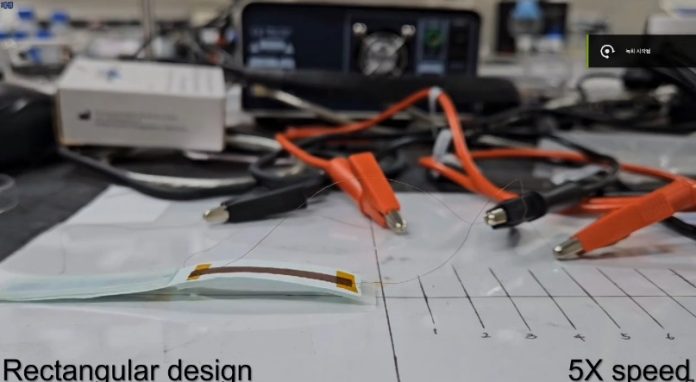
Nature often provides inspiration for new technologies, and this time it’s the humble caterpillar that has sparked a breakthrough in robotics.
A team of researchers at Chung-Ang University in South Korea has developed a soft robot made from paper that can crawl forward using motions inspired by caterpillars.
Their work, led by Professor Suk Tai Chang and Assistant Professor Changyeon Lee, was recently published in Advanced Functional Materials.
Soft robots differ from traditional robots because they are flexible, lightweight, and often made from unusual materials.
They can bend, stretch, and squeeze into spaces where rigid machines cannot go, making them ideal for tasks in hard-to-reach or hazardous environments.
One of the challenges in building these robots, however, has been achieving smooth, directional motion, such as crawling, without relying on complex heating systems and elaborate designs.
The Chung-Ang University team approached the problem in a simple but clever way. They used ordinary cellulose-based paper as the base material for their robot.
Paper has natural advantages—it is cheap, biodegradable, flexible, and has a porous structure that makes it easy to coat with conductive materials.
Instead of using complicated circuits, the researchers deposited copper electrodes directly onto the paper in an asymmetric pattern. By making the electrode widths different, they created small variations in electrical resistance.
These variations, in turn, caused temperature gradients across the paper when electricity flowed through it.
The robot’s design also included a thin layer of liquid crystal elastomers, or LCEs—materials that respond to temperature by bending.
When electricity heated the copper-coated paper unevenly, the temperature differences caused the LCE-paper structure to bend in a controlled, asymmetric way. This bending motion mimicked the way caterpillars contract and stretch their bodies to crawl.
Professor Chang explained that the team’s goal was to recreate the efficient crawling motion found in nature without the need for overly complex systems.
“We were intrigued by how a simple organism like a caterpillar could achieve highly efficient locomotion,” he said. “By using paper and straightforward electrode patterning, we achieved similar motion in a robot with far less complexity.”
The results are impressive. The paper-based soft robot was able to crawl in a specific direction at low voltage, showing that the system is both energy-efficient and effective.
Because it is lightweight and thin, the robot could potentially be deployed for environmental monitoring or tasks in places unsafe for humans, such as disaster zones or confined industrial spaces.
Beyond its practical uses, the simplicity and sustainability of this design stand out. Paper is an abundant, eco-friendly material, and the electrode patterning process used in this study is low-cost and scalable. This means that such robots could be produced cheaply and in large numbers, paving the way for widespread use in the future.
With their innovative yet simple design, the Chung-Ang University researchers have shown that even something as ordinary as paper can become the foundation for advanced robotic systems.
Their crawling robot demonstrates how drawing inspiration from nature, combined with clever engineering, can lead to new technologies with real-world potential.



